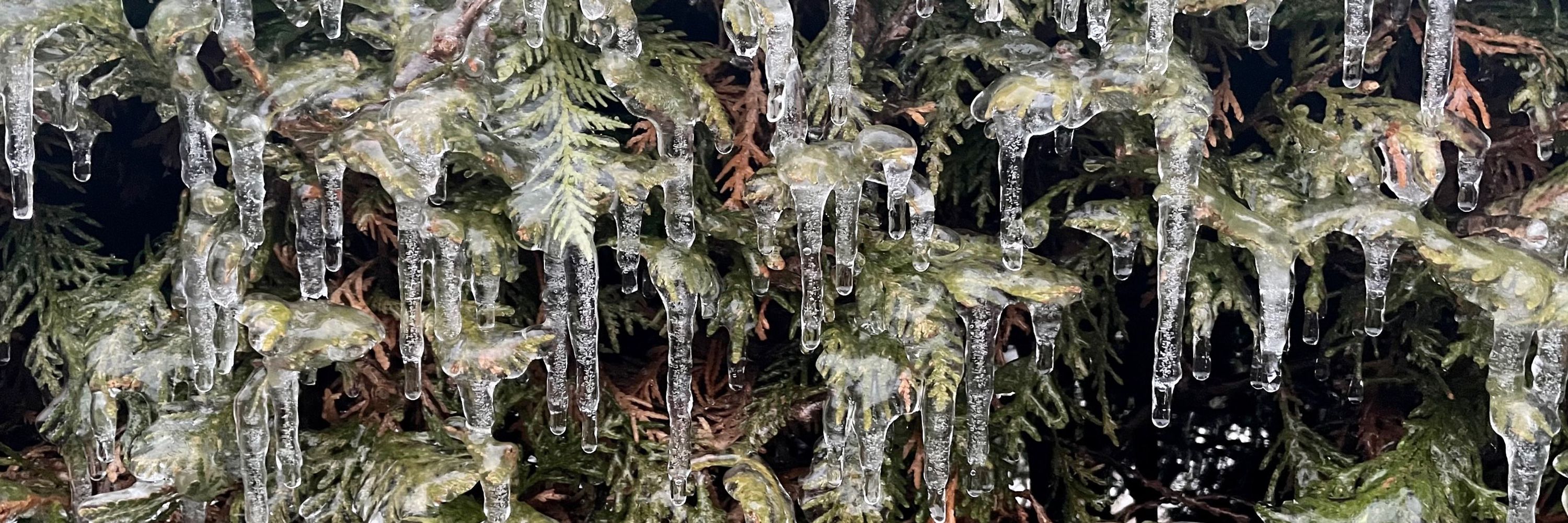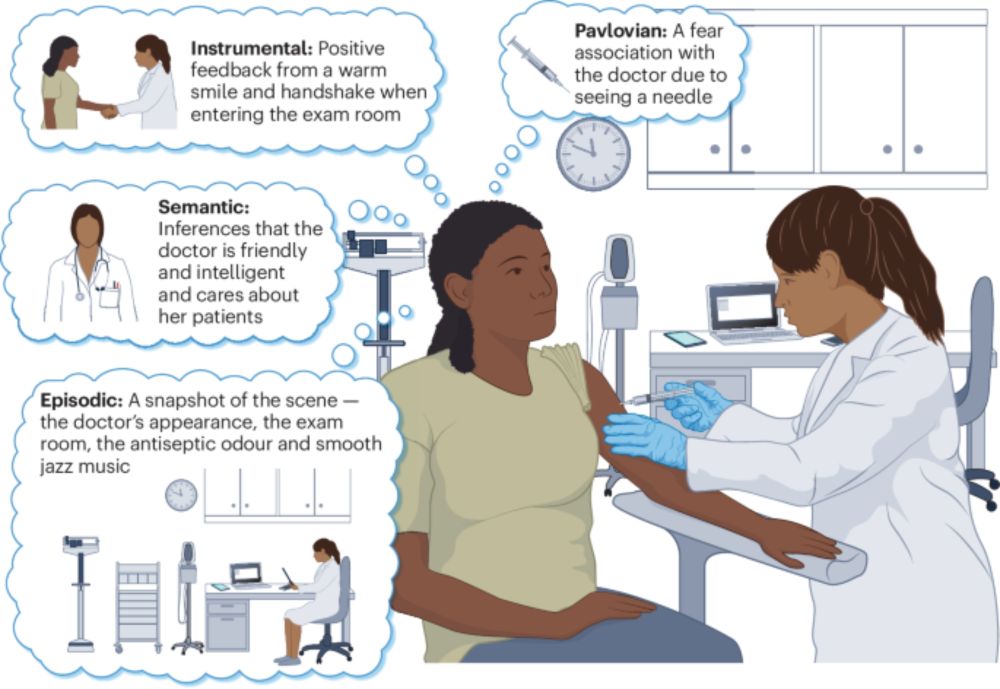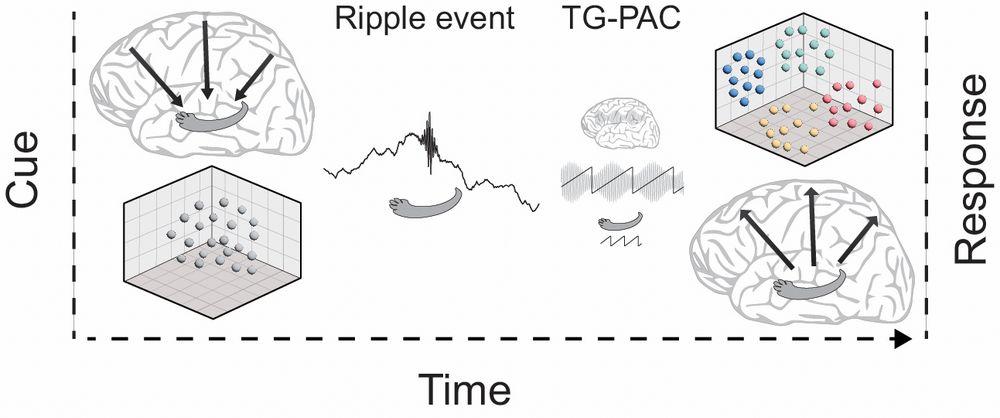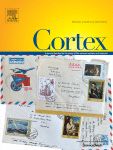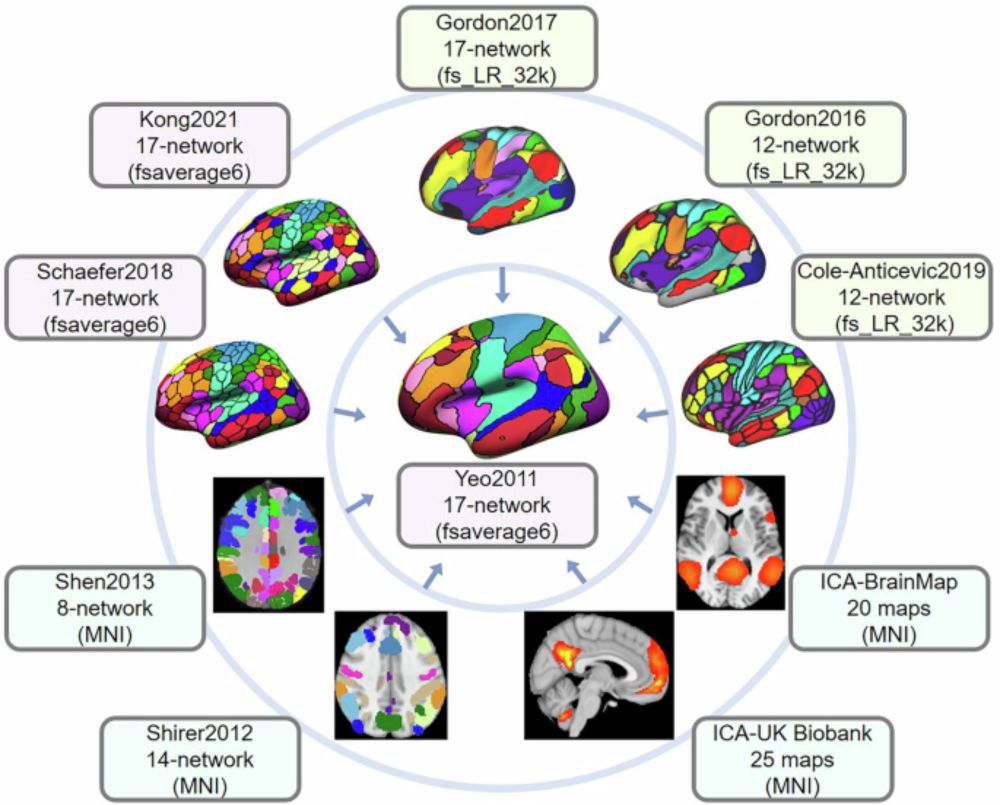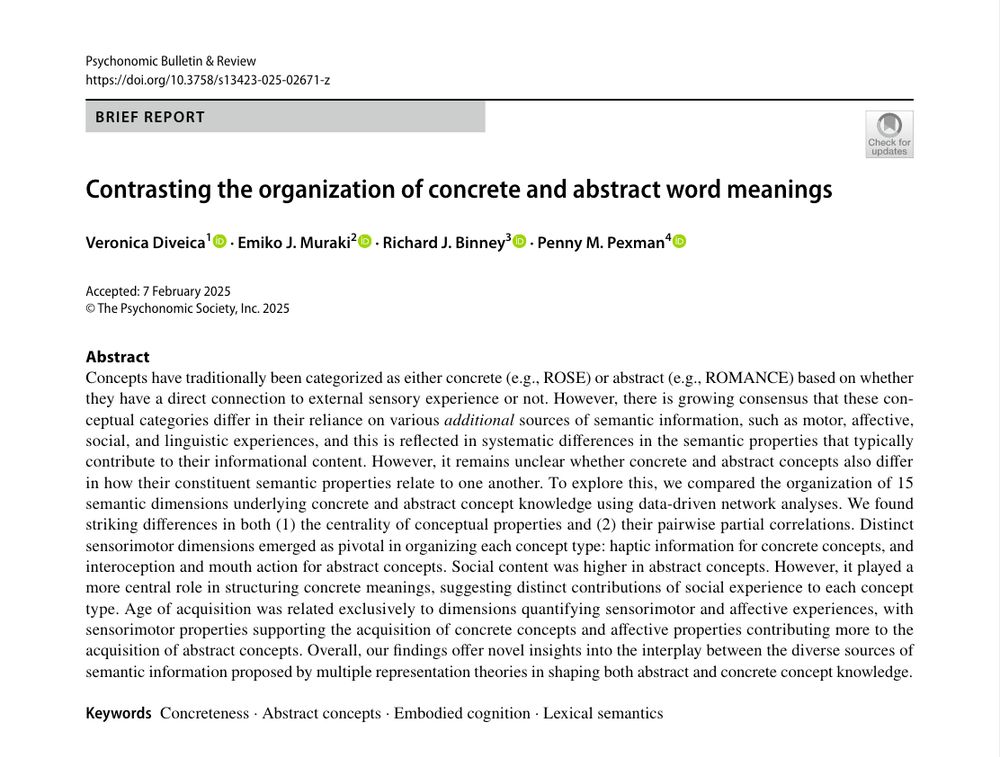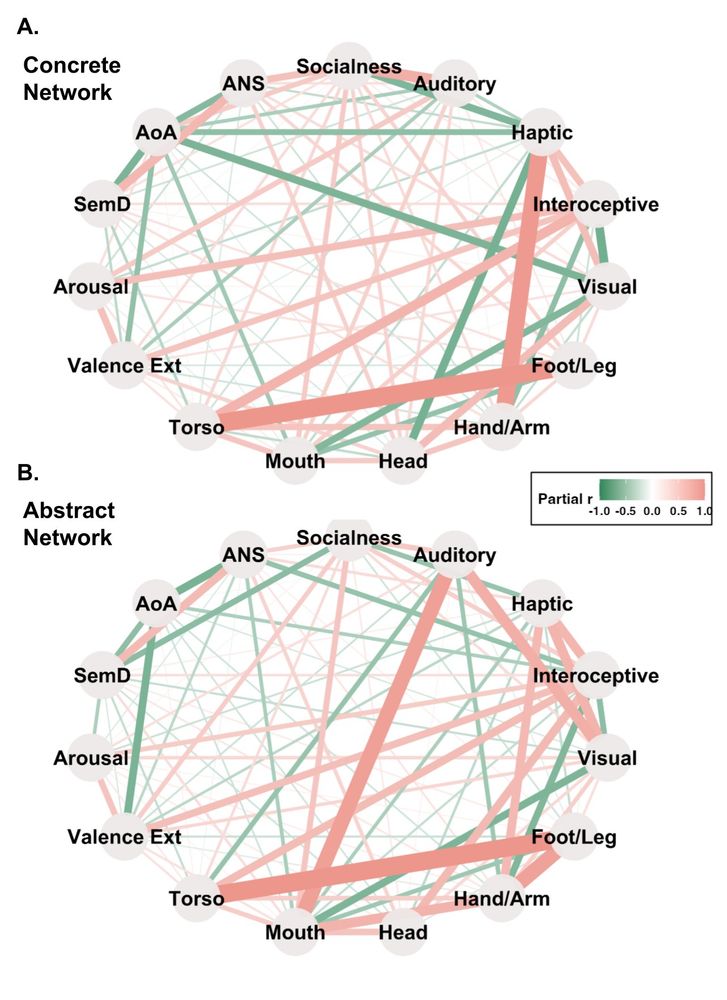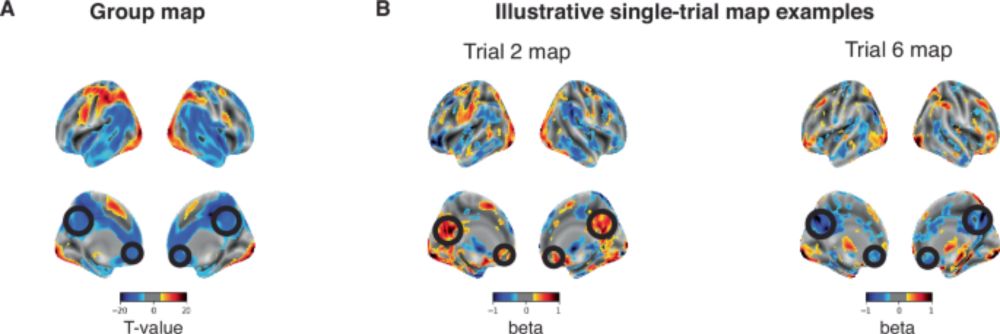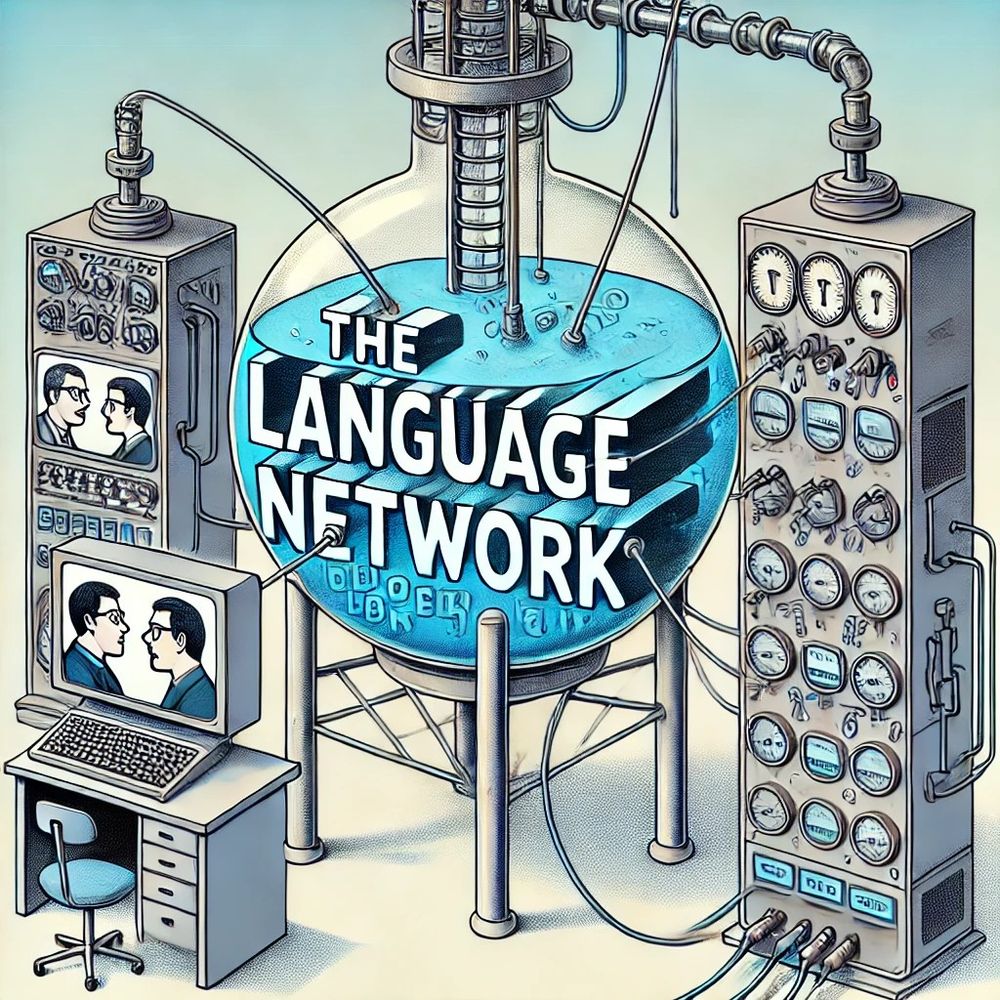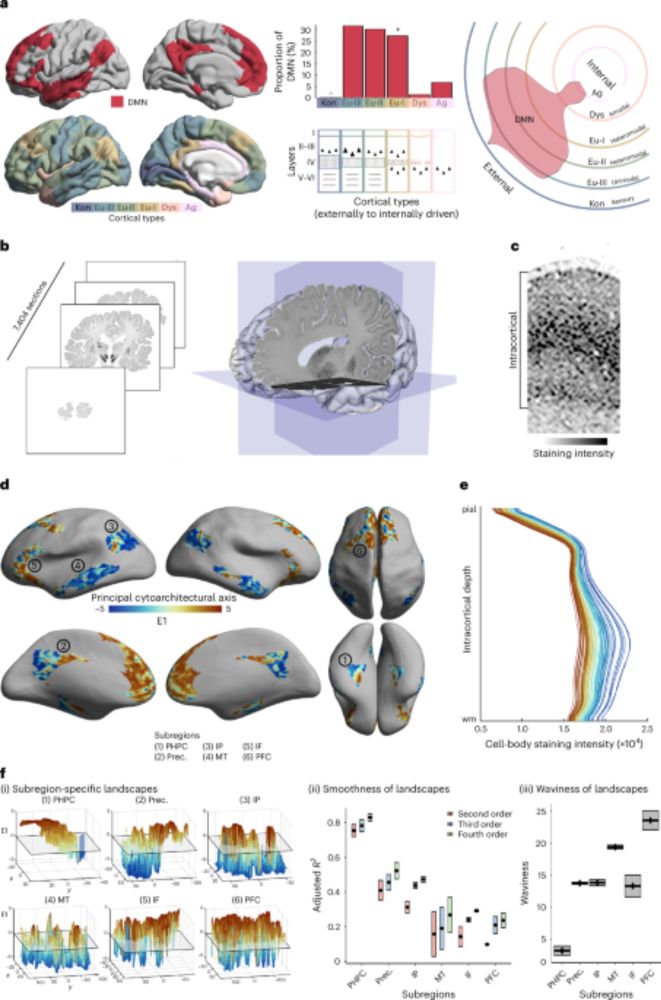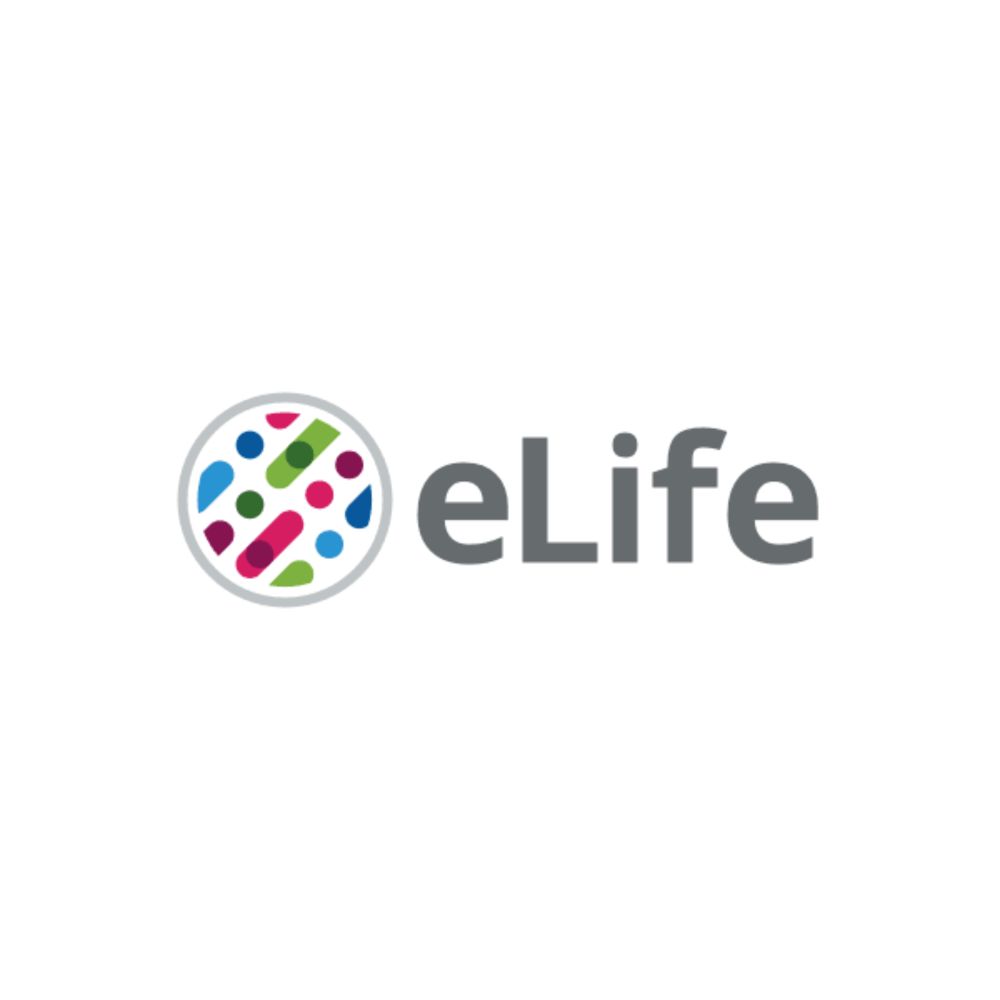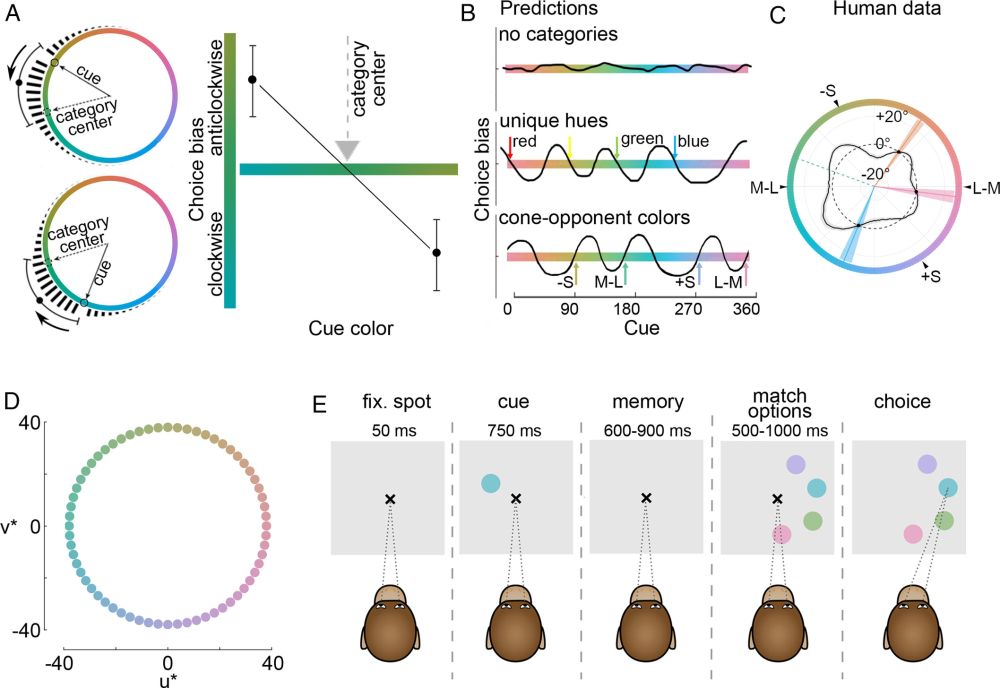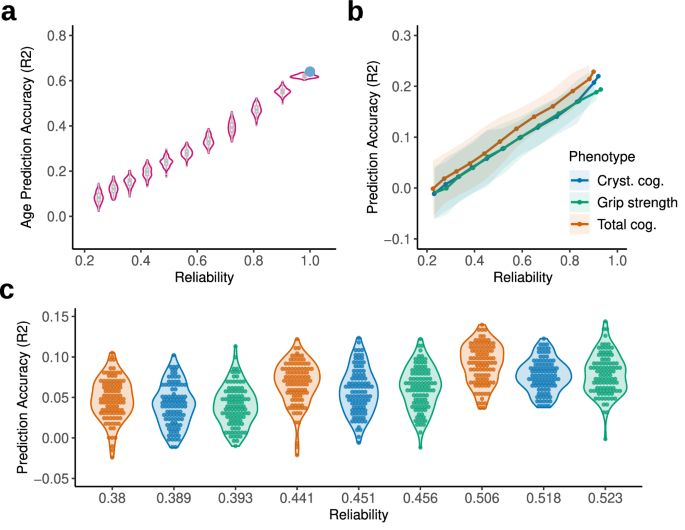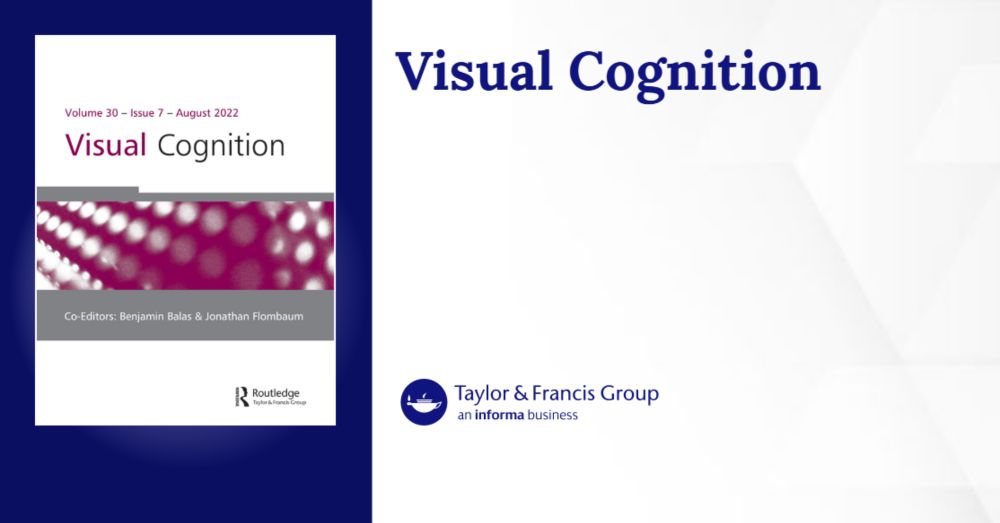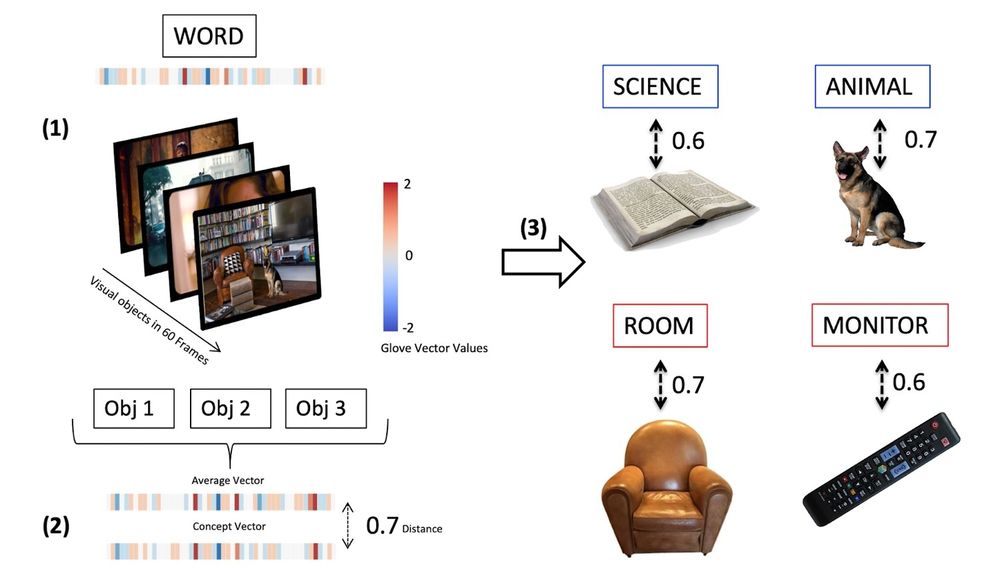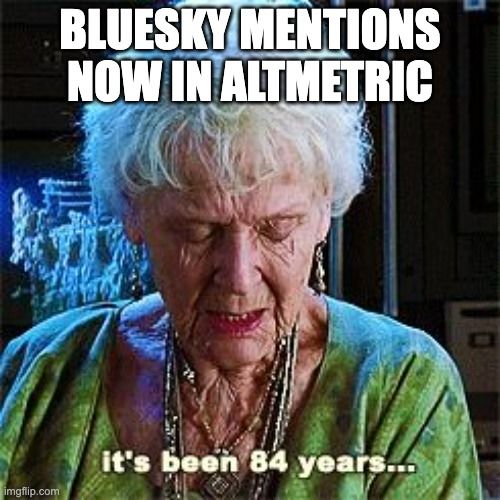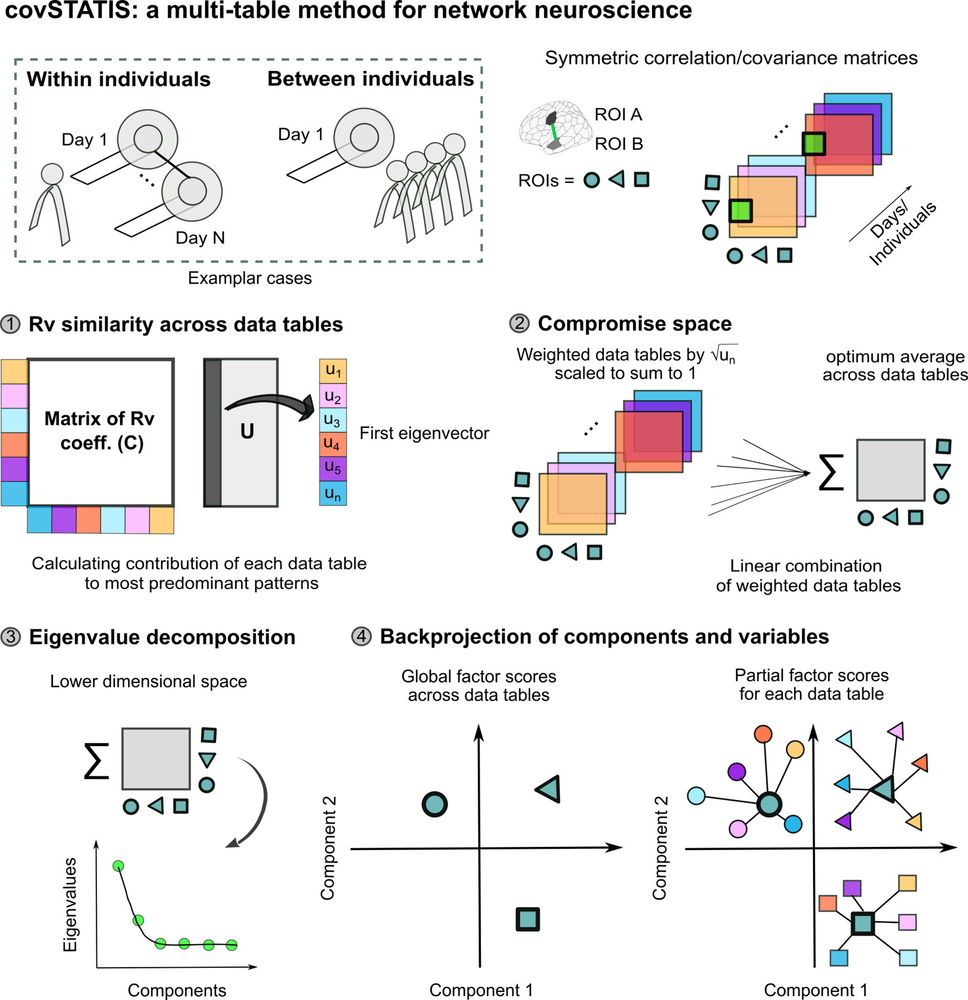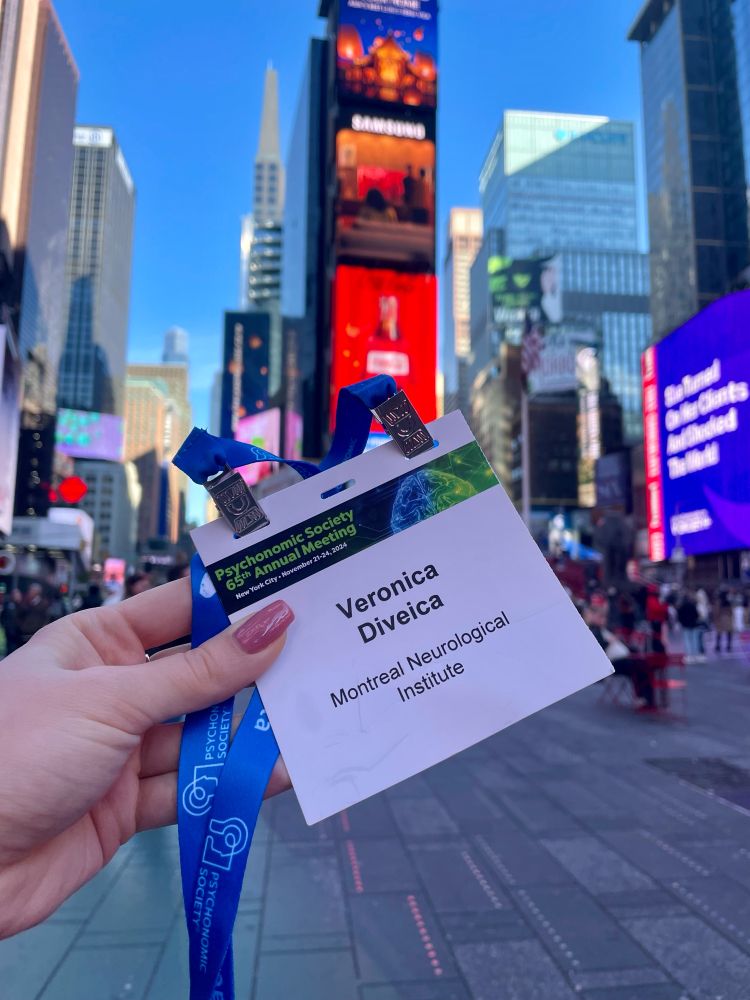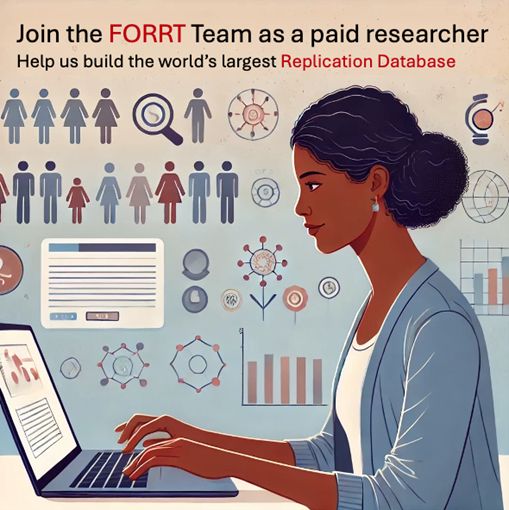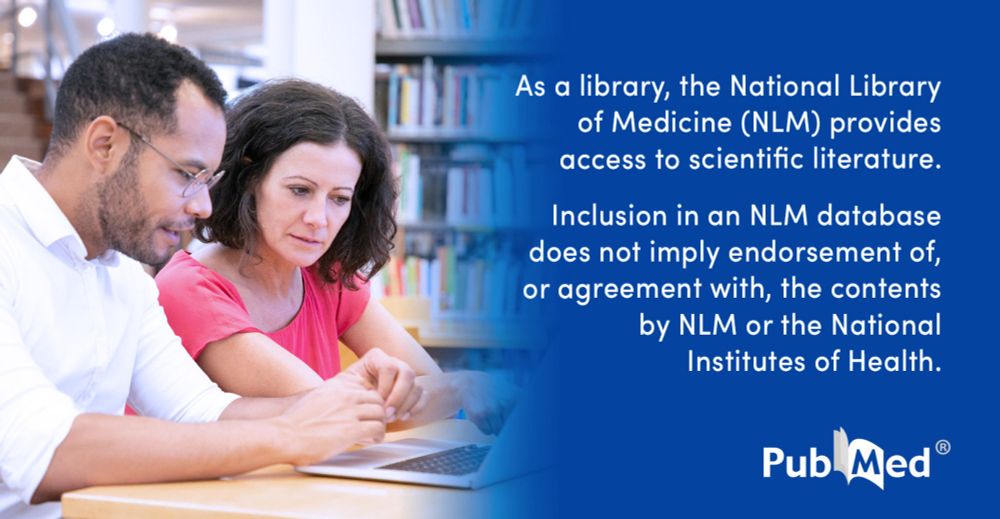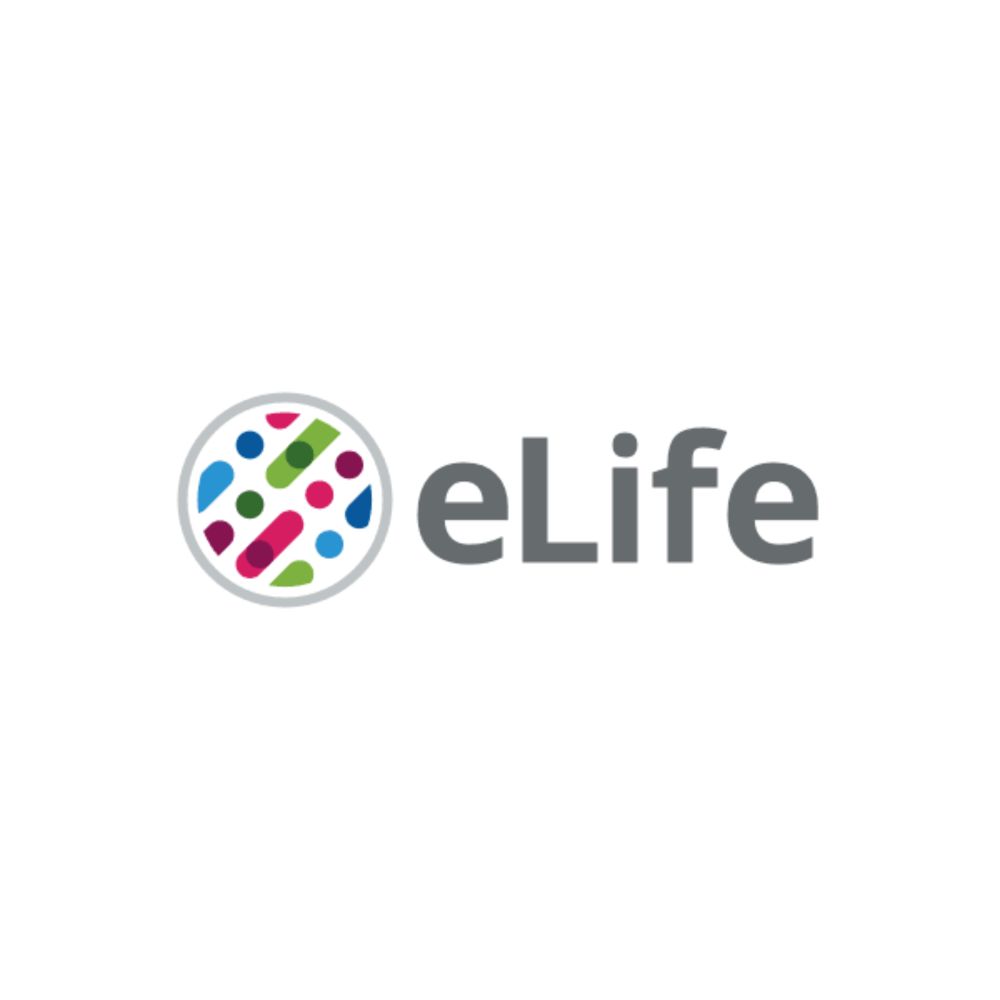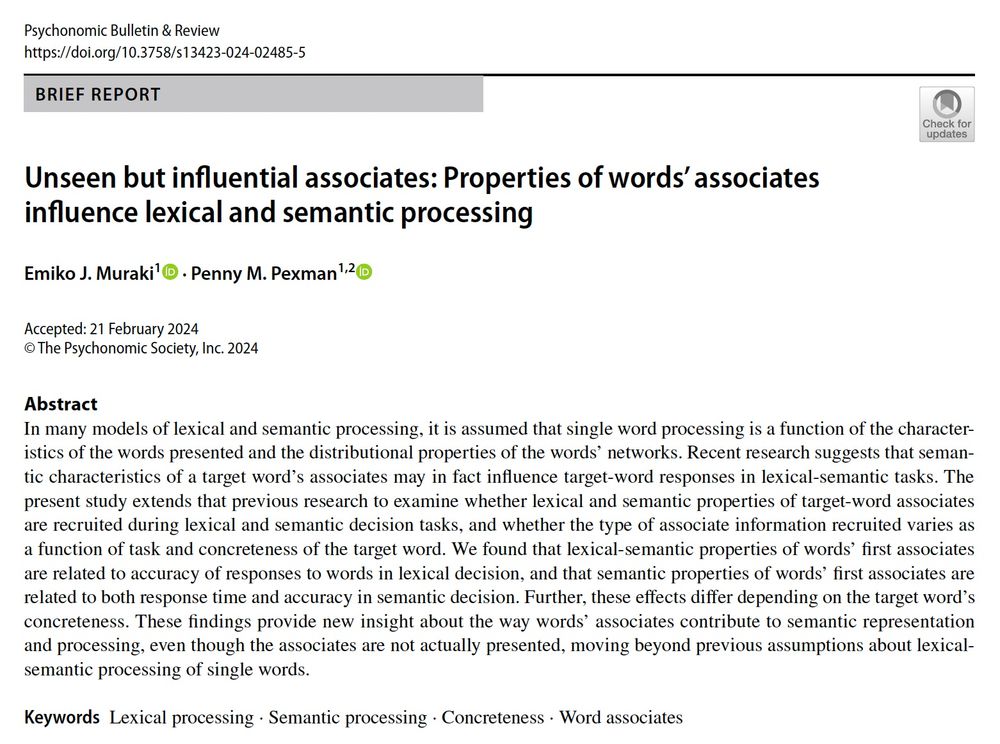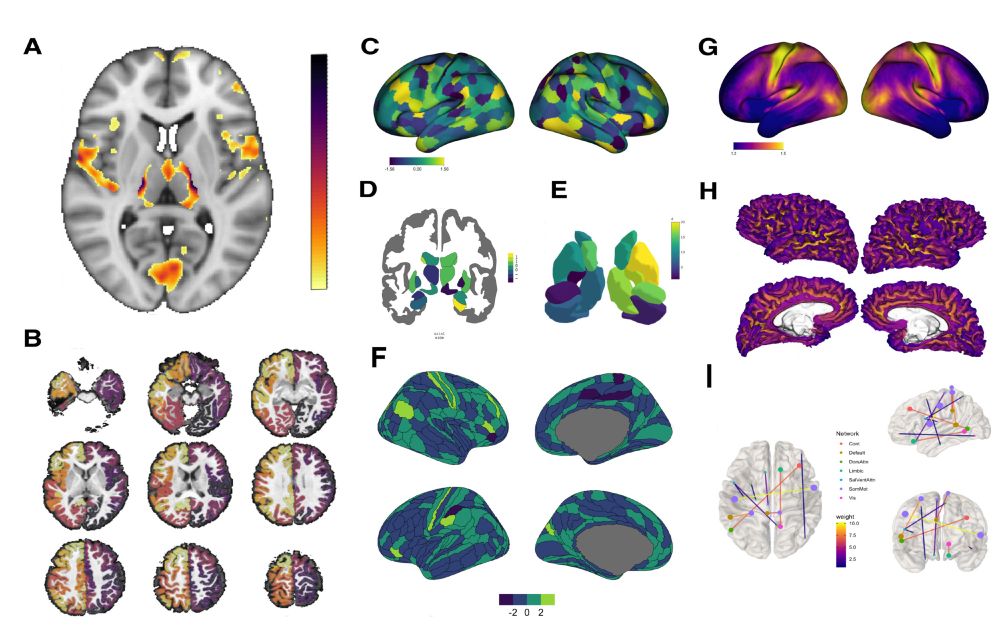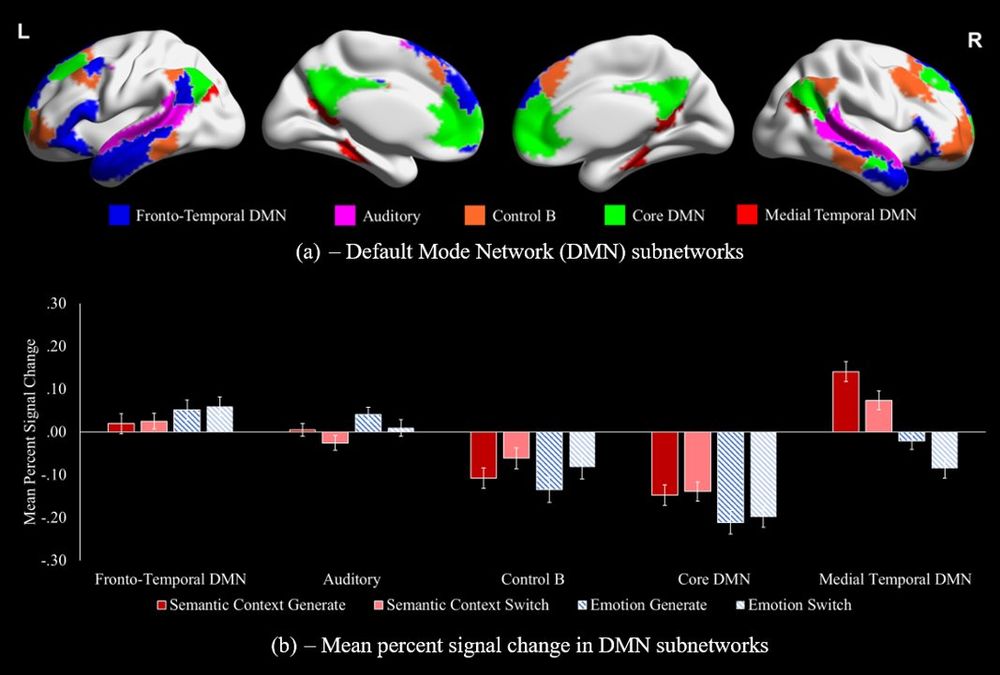Veronica Diveica
Postdoc at @theneuro.bsky.social in @nathanspreng.bsky.social lab | semantic knowledge, socialness & cognitive control 🧠 💭🫂 | OHBM Open Science SIG Treasurer-elect | McGill Postdoc Assoc. Chair
- Reposted by Veronica DiveicaI’m thrilled to share my new paper on impression formation & updating in @natrevpsychol.nature.com! In it, I argue that impression formation is fundamentally a learning process. And as such, theories of impression formation should be based on mechanisms of learning and memory. Some key take-aways:
- Reposted by Veronica Diveica[Not loaded yet]
- Reposted by Veronica Diveica🧠✨How do we rebuild our memories? In our new study, we show that hippocampal ripples kickstart a coordinated expansion of cortical activity that helps reconstruct past experiences. We recorded iEEG from patients during memory retrieval... and found something really cool 👇(thread)
- Reposted by Veronica Diveica🚨 New paper out in Human Brain Mapping! 🚨 with @pennypexman.bsky.social and @rjbinney.bsky.social 🧠 We show that the anterior temporal lobe (ATL) semantic hub supports abstract verb processing—with distinct activity patterns for: • Emotional verbs • Mental verbs • Non-embodied verbs
- Reposted by Veronica Diveica[Not loaded yet]
- Reposted by Veronica Diveica[Not loaded yet]
- Reposted by Veronica DiveicaNew preprint ✨ w/ @olafhauk.bsky.social and Matt Lambon Ralph @mrccbu.bsky.social @cambridgeuni.bsky.social @gatescambridge.bsky.social The anterior temporal lobe (ATL) seems crucial for both semantic memory and semantic composition. How to make sense of this neuroanatomical alignment? 🧠 🧵
- Reposted by Veronica DiveicaChuffed and excited to announce a new journal section in Cortex: *Methods and Assumptions* is open for submissions starting today! Read the opening editorial here (OA): www.sciencedirect.com/science/arti... 1/
- Reposted by Veronica DiveicaWe’re excited to announce a new project aimed at improving feedback practices across research. Our goal: to create accessible recommendations for all researchers, regardless of privilege/region/discipline. Share your best practice in our survey: bit.ly/3SEjSKk #Inclusivity
- Reposted by Veronica DiveicaCurious how to share code? Me too. Come along April 17! forms.gle/v72nSZyu4Fsh... Have you released a toolkit or software you'd like to share with the community? Let us know — we'd love to feature you in our how-to workshop series! @ohbmofficial.bsky.social @ohbmtrainees.bsky.social @ohbm-com.com
- Reposted by Veronica DiveicaIt's finally here! Use the Network Correspondence Toolbox to help contextualize your neuroimaging findings 🧠
- Reposted by Veronica DiveicaIt’s out! Our article in Nature Human Behavior led by Yin Wang on the conceptual structure of human relationships across cultures and time. This work is breathtaking nam10.safelinks.protection.outlook.com?url=https%3A...
- 🚨 NEW PAPER 🚨 We show that concrete (e.g., FLAG) and abstract (e.g., DEMOCRACY) concepts differ not just in the info they contain (e.g., sensorimotor, affective, social, linguistic) but in how these conceptual dimensions interrelate. 🔗 Link: rdcu.be/eb53b
- Reposted by Veronica Diveica🚨 🧠 We have a new preprint out where we studied which brain networks are engaged during mental imagery and self-generated thought. We used a precision fMRI approach along with multidimensional experience sampling (mDES) to get trialwise self-reports from each participant about what they imagined.
- Reposted by Veronica DiveicaNew paper alert! Have you ever looked at single-trial fMRI activation maps? If so, you know that they are super variable. Here we show that the variability is not just noise. In fact, the same task can consistently elicit different activation patterns. www.nature.com/articles/s41...
- Reposted by Veronica Diveica[Not loaded yet]
- Reposted by Veronica Diveica🗣️ Language is widely distributed throughout the brain 🧠 In a recent correspondence in @natrevneurosci.bsky.social, we suggest that there is no 'language network' in the brain. What appears as such is an inevitable illusion created in part by the methods we use. www.nature.com/articles/s41...
- Reposted by Veronica Diveica[Not loaded yet]
- Reposted by Veronica DiveicaOut in @natureneuro.bsky.social today 🥂 Cytoarchitecture, wiring and signal flow of the human default mode network Combining 3D histology, 7T MRI, and connectomics to explore DMN structure-function associations Led by Casey Paquola, @themindwanders.bsky.social & a terrific team of colleagues 🙏
- Reposted by Veronica DiveicaAre psychometric networks sufficiently supported by data such that one can be confident when interpreting its results? We analysed 294 psychometric networks from 126 papers with the Bayesian approach to address this question @jmbh.bsky.social Sara Ruth van Holst @maartenmarsman.bsky.social 🧵
- Reposted by Veronica DiveicaWe “grasp” word meanings: Evidence that individual differences in motor imagery are related to judgments of word meaning, in this new paper lead by Emiko Muraki:
- Reposted by Veronica Diveica📊 I was involved in launching THINGS-data, containing thousands of fMRI, MEG, and behavioral responses to objects. We show how these can be used to test hypotheses about object vision and semantics. Very proud to have contributed! 💪 elifesciences.org/articles/82580 (5/6)
- Reposted by Veronica Diveica[Not loaded yet]
- Reposted by Veronica DiveicaClever study that explores the debate between those who claim that color categories are 'innate' and those who argue that they are dependent on language. It turns out that monkeys, unlike humans, do not have consensus color categories, suggesting cognitive mechanisms such as language are required.🧪🧠
- The origin of color categories | PNAS www.pnas.org/doi/10.1073/...
- Reposted by Veronica DiveicaFive years in the making: our meta-analysis of 10 fMRI datasets across Asia, Europe, and North America (N=2,433). We find creative ability emerges from dynamic switching between default and executive brain networks, with optimal creativity at a "sweet spot."
- Reposted by Veronica DiveicaJohn Duncan always has something interesting to say. Construction and use of mental models: Organizing principles for the science of brain and mind doi.org/10.1016/j.ne... #neuroscience
- Reposted by Veronica Diveica[Not loaded yet]
- Reposted by Veronica Diveica[Not loaded yet]
- Reposted by Veronica DiveicaThe limiting factor for MRI based prediction of behavioral traits may be neither the imaging nor the pipeline or learning algorith but rather the reliability of the target phenotypes Thought provoking work my Martin Gell et al: www.nature.com/articles/s41...
- Reposted by Veronica DiveicaAs well as being an interesting topic, taking part in this convinced me that it's a fantastic way of recording our debates in a more stable place (with doi's). This record won't disappear on the whims of a social media network or as users (understandably) wipe their tweets, etc
- Reposted by Veronica Diveica"Imagining abstractness: The role of embodied simulations and language in memory for abstract concepts" by Quentin Marre, Nathalie Huet, and Elodie Labeye www.tandfonline.com/doi/abs/10.1...
- Reposted by Veronica DiveicaNaturalistic encoding of concepts in the brain @viktorkewenig.bsky.social shows that, while concepts generally encode habitual experiences, the underlying neurobiological organisation is not fixed but depends dynamically on available contextual information. 👏🍾🐐 elifesciences.org/articles/91522
- Reposted by Veronica DiveicaBLUESKY MEGA-THREAD Altmetric is thrilled and also LITERALLY RELIEVED to officially announce: We are now tracking research attention as it happens on Bluesky! We have been picking up posts on the site since late Oct. Our team is on Bluesky all day answering questions. Let's get into it!
- Reposted by Veronica DiveicaBaracchini and Yu et al. present a network neuroscience tutorial for covSTATIS, a method that identifies structured patterns in multi-table data: doi.org/10.52294/001... @derek--beaton.bsky.social @fmri-today.bsky.social
- Reposted by Veronica Diveica[Not loaded yet]
- Reposted by Veronica DiveicaNarrative CVs are coming to 🇨🇦 Tricouncil funding programs. New resources from our @westernuniversity.bsky.social Research team: uwo.ca/research/ser...
- Reposted by Veronica DiveicaHumans use language to express thoughts primarily built around the basic agent-patient causal structure *who does what to whom* Is this a structure of language or a structure of thought? Does it exist outside language? A new wave of exciting papers speak to this question. A 🧵👇
- I had an amazing time at #Psynom24 in New York City 🏙️, where I presented work @pennypexman.bsky.social @rjbinney.bsky.social Emiko Muraki and I have conducted on the contributions of social experience to concept knowledge 🗣️ See our latest paper here: doi.org/10.1016/j.co...
- Reposted by Veronica Diveica🔍 Paid opportunity with FORRT! Join us to expand the world’s largest replication database. Supported by @cos.io, we seek researchers to input entries, validate data, and support #OpenScience - 100% remotely. 🌐 Apply now! bit.ly/fred_apply #ResearchJobs
- Reposted by Veronica DiveicaReally looking forward to our #Psynom24 Super-Semantic Symposium Saturday Nov 23 - featuring Brendan Johns, @asifamajid.bsky.social @laurelbuxbaum.bsky.social, Gabriella Vigliocco, @veronicadiveica.bsky.social, and Leo Fernandino. See you in NY! @psychonomicsociety.bsky.social
- Reposted by Veronica DiveicaOur paper now out in Emotion on the conceptual structure of emotions w Allie Kelly, Evangelia Chrysikou, Yoed Kennett, John Medaglia -- pubmed.ncbi.nlm.nih.gov/38635194/
- Reposted by Veronica DiveicaIncredibly stoked to share this paper with lead team @renoultlouis.bsky.social @danipalombo.bsky.social and Dr Patrick Davidson. elifesciences.org/articles/83645 1/n
- In a 🚨 new paper 🚨: doi.org/10.1037/xlm0..., @pennypexman.bsky.social, @rjbinney.bsky.social, Emiko Muraki and I provide empirical evidence that social experience makes unique contributions to conceptual knowledge 🧵
- Reposted by Veronica DiveicaUnseen but influential associates🕵️♀️. In this new paper with Emiko Muraki, we find that semantic processing is influenced by properties of presented words' (non-presented) associates. Out today in @psychonomicsociety.bsky.social PB&R. Sharedit link here: rdcu.be/dAEtc
- Reposted by Veronica DiveicaOur YUGE consensus semantic paper is now out in the world. 50+ authors, hot tears, vicious arguments, shattered dreams -- but through the fire has emerged a glossary of terms/constructs to improve communication and promote incremental theory-building in our field. osf.io/preprints/ps...
- Reposted by Veronica DiveicaWe've contributed to the proliferation of semantic variables (socialness, sensorimotor experience, etc), and here we synthesize their higher-order semantic structure, across thousands of concepts. With @veronicadiveica.bsky.social @rjbinney.bsky.social and Emiko Muraki.
- Mapping Semantic Space: Exploring the Higher-order Structure of Word Meaning: osf.io/dxcqn/
- Reposted by Veronica DiveicaGreat guide on generating reproducible figures for fMRI-based research (which can be tricky at times). It even comes with a shiny app: sidchop.shinyapps.io/braincode/ Chopra et al. #neuroscience apertureneuro.org/article/8510...
- Reposted by Veronica DiveicaDelighted to see this out - brilliant work led by @veronicadiveica.bsky.social
- The ✨left inferior frontal gyrus✨ responds to numerous cognitive tasks. Does it have one task-general role or does it contain subregions with different functional specializations? We explore its ✨cross-domain functional organization✨ in a 🚨 new paper 🚨 : doi.org/10.1093/cerc...
- The ✨left inferior frontal gyrus✨ responds to numerous cognitive tasks. Does it have one task-general role or does it contain subregions with different functional specializations? We explore its ✨cross-domain functional organization✨ in a 🚨 new paper 🚨 : doi.org/10.1093/cerc...
- The ✨left inferior frontal gyrus✨ responds to numerous cognitive tasks. Does it have one task-general role or does it contain subregions with different functional specializations? We explore its ✨cross-domain functional organization✨ in a 🚨 new paper 🚨 : doi.org/10.1093/cerc...
- Reposted by Veronica DiveicaHere's the preprint for my final PhD paper, and my first fMRI study! 🧠 We found that dissociable default mode network (DMN) subnetworks support retrieval of contextual and emotional associations, seperately from processing of retrieval demands www.biorxiv.org/content/10.1...
- Reposted by Veronica DiveicaHi everyone, we have also moved over. We have seen the light! Looking forward to continuing to post/repost (RIP tweet/retweet) all matters of interest to the OHBM student and postdoc community! 🧠🎓🌐 Let us know if there is anything (PhD/job positions, upcoming events etc) you think we should share!
